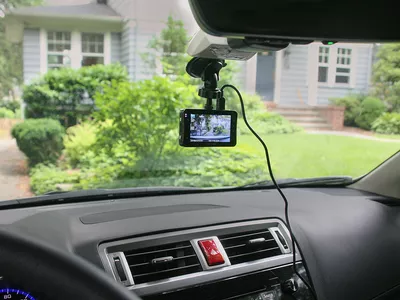
Mastering Video Editing Replacing Audio Tracks - A Comprehensive Guide (Part 1)

Mastering Video Editing: Replacing Audio Tracks - A Comprehensive Guide (Part 1)
Video editing is inclusive of editing the audio track. You may be working on background scores, original soundtracks, and different kinds of sound effects. These tasks would need you to edit or replace audio in the video. You may have to mix other audio tracks to have one score. From sound engineering to finely editing every track being mixed, it is an ever expanding and exciting technical niche that will depend largely on a plethora of tools, so in this article, we will let you how to replace audio in video with 2 methods by using Filmora and Windows Movie Maker.
In this article
01 How to replace audio in video with Filmora
02 How to change audio in video with Windows Movie Maker
Part 1: How to replace audio in video with Filmora
The first method, let us explore how you can replace audio in video with Wondershare Filmora.
To begin with, get a free trial copy of Wondershare Filmora .
For Win 7 or later (64-bit)
For macOS 10.12 or later
Step 1. Import file
Open the application and click ‘ Import once you have downloaded and installed Wondershare Filmora. Please search for the relevant video you wish to edit and load it from the hard disk or the specific folder. You can select multiple videos using ‘ctrl’ and clicking on the chosen files.

Step 2. Drag and drop to the video Timeline
The videos selected will be displayed as thumbnails. Choose a video, hit and click without releasing the click and drag the chosen video to the Video Timeline.

Step 3. Remove the original sound of the video
Right-click on it, and you would see the option of “Audio detach.” Click on it, and the audio file will detach from the video file and get added to Music Timeline.
Press “Delete” on your keyboard, and you will get rid of it. You can save this video without the audio, and you would only have the visuals, unimpaired and unaffected in any way, without the sound.

Step 4. Add a new audio track
You can add a new audio track to the video by choosing royalty sound or music from the Filmora library or importing any audio you like.

Part 2: How to change audio in video with Windows Movie Maker
The second method, Apart from replacing audio by Filmora, you can also make it by Windows Movie Maker. Though it is discontinued to develop a new version, you can still use it in Windows 7. Below are the steps to replace audio in Windows Movie Maker .
Step 1: Import video
First, download and run it. Click Add videos and photos to import video.

Step 2: Turn off the original sound
Click Edit tab > Video volume to turn off the sound by draging the slider to the left.
Step 3: Add audio to video
Click Add music to import the targeted music to Windows Movie Maker. You can select Add music or Add music at the current point.
Step 4: Save project
Click the file icon in the top left corner to save the video. Choose Save movie to export the targeted file.
Wondershare Filmora allows you to replace easily and edit the audio in the video
Unfortunately, no application by default on your desktop or laptop, phone, or tablet would get this done. To replace audio in the video, you would need the help of state of the art software. Fortunately, you have Wondershare Filmora at your disposal.
With Wondershare Filmora, you can replace audio in the video, mute audio, detach the audio, and add audio. You can eliminate background noise, organic noise, sound effects, address the sync problem in a video file, and edit the audio in a video without any extensive training or expertise.
- It has a user-friendly interface which makes things simple even for amateurs.
- It supports all common video and audio formats, including WMV, MOV, FLV, MTS, MP4, etc.
- You can move audio, replace it or add new audio to the video without worrying about general loss, which is loss of quality.
- You can export the edited video with the new or edited audio to various devices, including the cloud and social media sites.
- Compatible with Windows (including Windows 8) & Mac OS X (10.6 and above).
For Win 7 or later (64-bit)
For macOS 10.12 or later
02 How to change audio in video with Windows Movie Maker
Part 1: How to replace audio in video with Filmora
The first method, let us explore how you can replace audio in video with Wondershare Filmora.
To begin with, get a free trial copy of Wondershare Filmora .
For Win 7 or later (64-bit)
For macOS 10.12 or later
Step 1. Import file
Open the application and click ‘ Import once you have downloaded and installed Wondershare Filmora. Please search for the relevant video you wish to edit and load it from the hard disk or the specific folder. You can select multiple videos using ‘ctrl’ and clicking on the chosen files.

Step 2. Drag and drop to the video Timeline
The videos selected will be displayed as thumbnails. Choose a video, hit and click without releasing the click and drag the chosen video to the Video Timeline.

Step 3. Remove the original sound of the video
Right-click on it, and you would see the option of “Audio detach.” Click on it, and the audio file will detach from the video file and get added to Music Timeline.
Press “Delete” on your keyboard, and you will get rid of it. You can save this video without the audio, and you would only have the visuals, unimpaired and unaffected in any way, without the sound.

Step 4. Add a new audio track
You can add a new audio track to the video by choosing royalty sound or music from the Filmora library or importing any audio you like.

Part 2: How to change audio in video with Windows Movie Maker
The second method, Apart from replacing audio by Filmora, you can also make it by Windows Movie Maker. Though it is discontinued to develop a new version, you can still use it in Windows 7. Below are the steps to replace audio in Windows Movie Maker .
Step 1: Import video
First, download and run it. Click Add videos and photos to import video.

Step 2: Turn off the original sound
Click Edit tab > Video volume to turn off the sound by draging the slider to the left.
Step 3: Add audio to video
Click Add music to import the targeted music to Windows Movie Maker. You can select Add music or Add music at the current point.
Step 4: Save project
Click the file icon in the top left corner to save the video. Choose Save movie to export the targeted file.
Wondershare Filmora allows you to replace easily and edit the audio in the video
Unfortunately, no application by default on your desktop or laptop, phone, or tablet would get this done. To replace audio in the video, you would need the help of state of the art software. Fortunately, you have Wondershare Filmora at your disposal.
With Wondershare Filmora, you can replace audio in the video, mute audio, detach the audio, and add audio. You can eliminate background noise, organic noise, sound effects, address the sync problem in a video file, and edit the audio in a video without any extensive training or expertise.
- It has a user-friendly interface which makes things simple even for amateurs.
- It supports all common video and audio formats, including WMV, MOV, FLV, MTS, MP4, etc.
- You can move audio, replace it or add new audio to the video without worrying about general loss, which is loss of quality.
- You can export the edited video with the new or edited audio to various devices, including the cloud and social media sites.
- Compatible with Windows (including Windows 8) & Mac OS X (10.6 and above).
For Win 7 or later (64-bit)
For macOS 10.12 or later
02 How to change audio in video with Windows Movie Maker
Part 1: How to replace audio in video with Filmora
The first method, let us explore how you can replace audio in video with Wondershare Filmora.
To begin with, get a free trial copy of Wondershare Filmora .
For Win 7 or later (64-bit)
For macOS 10.12 or later
Step 1. Import file
Open the application and click ‘ Import once you have downloaded and installed Wondershare Filmora. Please search for the relevant video you wish to edit and load it from the hard disk or the specific folder. You can select multiple videos using ‘ctrl’ and clicking on the chosen files.

Step 2. Drag and drop to the video Timeline
The videos selected will be displayed as thumbnails. Choose a video, hit and click without releasing the click and drag the chosen video to the Video Timeline.

Step 3. Remove the original sound of the video
Right-click on it, and you would see the option of “Audio detach.” Click on it, and the audio file will detach from the video file and get added to Music Timeline.
Press “Delete” on your keyboard, and you will get rid of it. You can save this video without the audio, and you would only have the visuals, unimpaired and unaffected in any way, without the sound.

Step 4. Add a new audio track
You can add a new audio track to the video by choosing royalty sound or music from the Filmora library or importing any audio you like.

Part 2: How to change audio in video with Windows Movie Maker
The second method, Apart from replacing audio by Filmora, you can also make it by Windows Movie Maker. Though it is discontinued to develop a new version, you can still use it in Windows 7. Below are the steps to replace audio in Windows Movie Maker .
Step 1: Import video
First, download and run it. Click Add videos and photos to import video.

Step 2: Turn off the original sound
Click Edit tab > Video volume to turn off the sound by draging the slider to the left.
Step 3: Add audio to video
Click Add music to import the targeted music to Windows Movie Maker. You can select Add music or Add music at the current point.
Step 4: Save project
Click the file icon in the top left corner to save the video. Choose Save movie to export the targeted file.
Wondershare Filmora allows you to replace easily and edit the audio in the video
Unfortunately, no application by default on your desktop or laptop, phone, or tablet would get this done. To replace audio in the video, you would need the help of state of the art software. Fortunately, you have Wondershare Filmora at your disposal.
With Wondershare Filmora, you can replace audio in the video, mute audio, detach the audio, and add audio. You can eliminate background noise, organic noise, sound effects, address the sync problem in a video file, and edit the audio in a video without any extensive training or expertise.
- It has a user-friendly interface which makes things simple even for amateurs.
- It supports all common video and audio formats, including WMV, MOV, FLV, MTS, MP4, etc.
- You can move audio, replace it or add new audio to the video without worrying about general loss, which is loss of quality.
- You can export the edited video with the new or edited audio to various devices, including the cloud and social media sites.
- Compatible with Windows (including Windows 8) & Mac OS X (10.6 and above).
For Win 7 or later (64-bit)
For macOS 10.12 or later
02 How to change audio in video with Windows Movie Maker
Part 1: How to replace audio in video with Filmora
The first method, let us explore how you can replace audio in video with Wondershare Filmora.
To begin with, get a free trial copy of Wondershare Filmora .
For Win 7 or later (64-bit)
For macOS 10.12 or later
Step 1. Import file
Open the application and click ‘ Import once you have downloaded and installed Wondershare Filmora. Please search for the relevant video you wish to edit and load it from the hard disk or the specific folder. You can select multiple videos using ‘ctrl’ and clicking on the chosen files.

Step 2. Drag and drop to the video Timeline
The videos selected will be displayed as thumbnails. Choose a video, hit and click without releasing the click and drag the chosen video to the Video Timeline.

Step 3. Remove the original sound of the video
Right-click on it, and you would see the option of “Audio detach.” Click on it, and the audio file will detach from the video file and get added to Music Timeline.
Press “Delete” on your keyboard, and you will get rid of it. You can save this video without the audio, and you would only have the visuals, unimpaired and unaffected in any way, without the sound.

Step 4. Add a new audio track
You can add a new audio track to the video by choosing royalty sound or music from the Filmora library or importing any audio you like.

Part 2: How to change audio in video with Windows Movie Maker
The second method, Apart from replacing audio by Filmora, you can also make it by Windows Movie Maker. Though it is discontinued to develop a new version, you can still use it in Windows 7. Below are the steps to replace audio in Windows Movie Maker .
Step 1: Import video
First, download and run it. Click Add videos and photos to import video.

Step 2: Turn off the original sound
Click Edit tab > Video volume to turn off the sound by draging the slider to the left.
Step 3: Add audio to video
Click Add music to import the targeted music to Windows Movie Maker. You can select Add music or Add music at the current point.
Step 4: Save project
Click the file icon in the top left corner to save the video. Choose Save movie to export the targeted file.
Wondershare Filmora allows you to replace easily and edit the audio in the video
Unfortunately, no application by default on your desktop or laptop, phone, or tablet would get this done. To replace audio in the video, you would need the help of state of the art software. Fortunately, you have Wondershare Filmora at your disposal.
With Wondershare Filmora, you can replace audio in the video, mute audio, detach the audio, and add audio. You can eliminate background noise, organic noise, sound effects, address the sync problem in a video file, and edit the audio in a video without any extensive training or expertise.
- It has a user-friendly interface which makes things simple even for amateurs.
- It supports all common video and audio formats, including WMV, MOV, FLV, MTS, MP4, etc.
- You can move audio, replace it or add new audio to the video without worrying about general loss, which is loss of quality.
- You can export the edited video with the new or edited audio to various devices, including the cloud and social media sites.
- Compatible with Windows (including Windows 8) & Mac OS X (10.6 and above).
For Win 7 or later (64-bit)
For macOS 10.12 or later
Cutting-Edge Music Editing Software Roundup: The Top 10 Compatible Apps for Windows and Mac
We often need to edit audio files, but the only thing that matters is using a good audio editing app. The question here is, how do you know an audio editor is good or not? The most basic requirement for good editors is a clean and understandable interface. If the interface of the audio editor is cluttered, you will never be attracted. Isn’t it right?
Does your song editor support multi-tracks? This is because the next thing that matters while selecting a good editor is the facility of multi-track to handle complex projects. Like this, many other factors are essential to consider. For now, let’s move on and share 10 audio editors.
Part 1. 10 Best Audio Editor for Windows and Mac
Now that you have a little idea about what a good audio editor should have, let’s share something new now. The following section of this article will introduce 10 great songs editors. So, let’s start without further delay!
1. Ocenaudio
Compatibility: Windows & Mac
Let’s start the discussion with Ocenaudio audio editor, as this is a powerful, fast and easy editor. The interface of Ocenaudio is very clean and interesting because of the colorful buttons. This audio editor is an open-source platform. Is Ocenaudio efficient?
Yes, it is! This editor offers keyboard shortcuts that make the tool easy and efficient to use. What features do you get from Ocenaudio? Along with basic editing features like trimming, cutting, you also get noise reduction, filters, 31-band equalizer, pitch adjustments, etc. Sounds great!
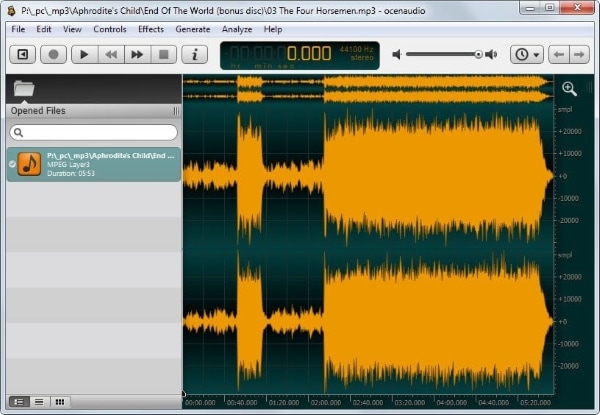
2. Audacity
Compatibility: Windows & Mac
Are you ready to know about an open-source song editor? We are pointing towards Audacity editing software. Audacity is an open-source, free, cross-platform audio editing software that provides various features. This audio editor is a multi-track, and apart from editing capabilities, it also has recording functionalities via a microphone, mixer, etc.
This editing software supports different sound qualities like 16-bit, 24-bit, and also 32-bit. For editing audio, you get features like Cut, Delete, Copy, Paste, etc. Audacity supports different plugins, including LADSPA, Nyquist, VST, Audio Unit Effect, and LV2. You can import and export various file formats to Audacity. Looking forward to it?
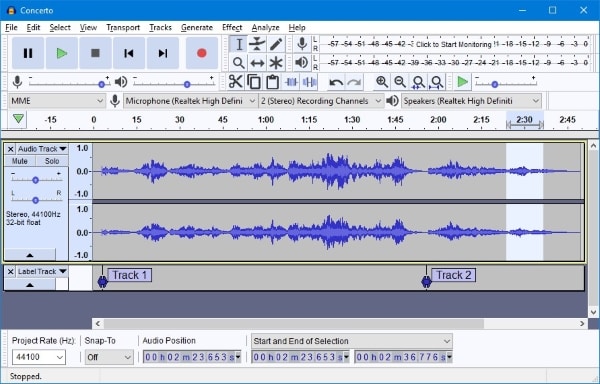
3. TwistedWave
Compatibility: Mac
What cool features does TwistedWave song editor has to offer? Let’s explore! This editing software is not just an ordinary editor; you get a lot more than that. For instance, features like Recording, Mastering, Batch processing of files, Converting Files, etc., are offered. Moreover, with the TwistedWave editing tool, you can get Pitch Shift technology, Time Stretch, etc.
This editor also offers Silence Detection, Video Sync, and many more cool audio editing features. Do you know what else TwistedWave has? Well, apart from all this, this editor also has Speech Recognition capability and supports multichannel audio editing. Perfect, right?

4. WavePad Audio Editing Software
Compatibility: Windows & Mac
Can you name a software with advanced tools? It’s WavePad Audio Editing Software with advanced tools like Spectral Analysis, FFT, and TFFT. This audio editor supports almost all file formats like MP3, FLAC, OGG, M4A, etc. This editor provides great ease; do you know how? It allows batch processing of files, which means everything is applied to multiple files at once. This is quite interesting.
Features like a scrub, search and bookmark audio are available for precise audio editing. If you want to use the Noise Reduction feature, you can also get access to that from Audio Restoration. WavePad Audio Editor supports sample rates ranging from 6 kHz to 192 kHz. Looking forward to using it?
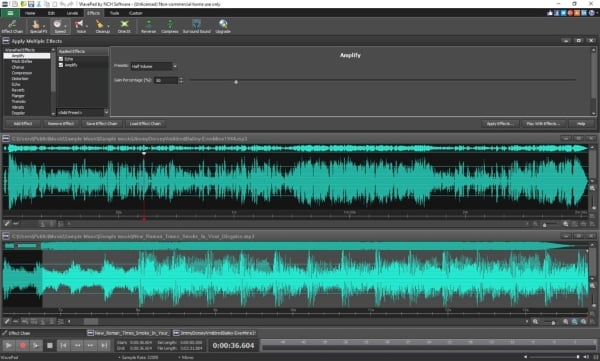
5. Fission Audio Editing
Compatibility: Mac
Do you think editing is a chore? Try Fission Audio Editor, and this will change your mind. This audio editor comes with features like cut, trim, join audio, split files, and much more. Unlike other software, this audio editor promises to retain the original quality of the audio file even after editing. Additionally, this software provides fast, streamlined editing. Pretty awesome, right?
Are you ready to learn more about Fission Audio Editor? This editing software allows Smart Split, Quick Audio Removal, and much more. It supports various formats, including FLAC, AIFF, MP3, WAV, etc. Should we share something remarkable about the editor? Well, it lets you create unique ringtones.
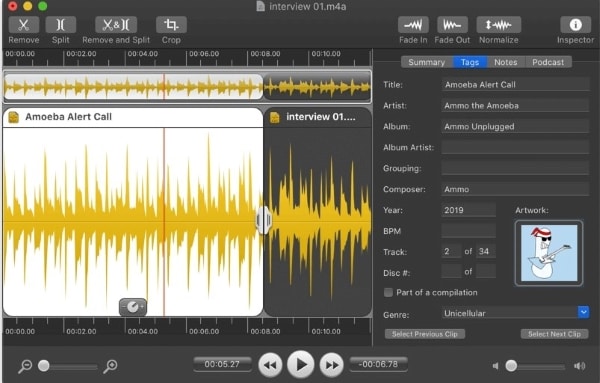
6. Sound Forge Audio Editor
Compatibility: Windows
Editing features like Mastering, Recording, and also Audio Editing have been made easy and fun with Sound Forge Audio Editor. The interface of this song editor is very clean and understandable; do you know why? This is because the left side of the screen offers all the tools and different editing options from where you can select and move on. You would be surprised to hear about it.
This editor has a lot of new features like Modern Reverb, Modern EQ, Resampling Engine, Optimized Multichannel handling, and so much more. For audio editing, you get functions like cut, move, and edit; this software also offers professional effects and 64-bit power up to 6 different channels.
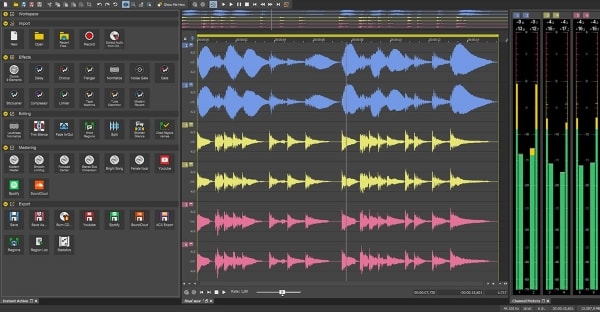
7. Logic Pro
Compatibility: Mac
What should we share next? How about Logic Pro? This audio editor is incredibly powerful and very creative. You can do wonderous audio editing, beat making, audio mixing, and much more with Logic Pro. It supports a massive collection of plugins and sounds like instruments, effects, etc. Do you wish to know more?
How to best use the tools? Well, with Logic Pro, use multi-touch gestures to adjust the instruments, track mixing, control features, etc. The interface of this software is loaded with different features and editing options.
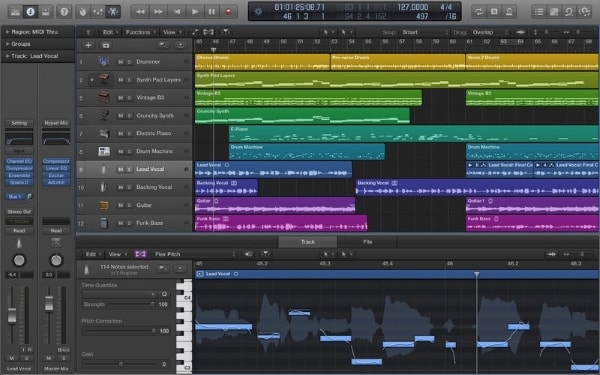
8. Ashampoo
Compatibility: Windows
Which song editor offers keyboard shortcuts? Its Ashampoo. This editing software provides tools for easy audio trimming, audio splitting, mixing, cutting, etc. Along with this, it also offers tempo analysis and smart synchronization. Curious to hear more about it?
How do you organize songs? Ashampoo organizes songs efficiently with different templates. This editor works perfectly because it has an optimized workflow. It surely is among the best.
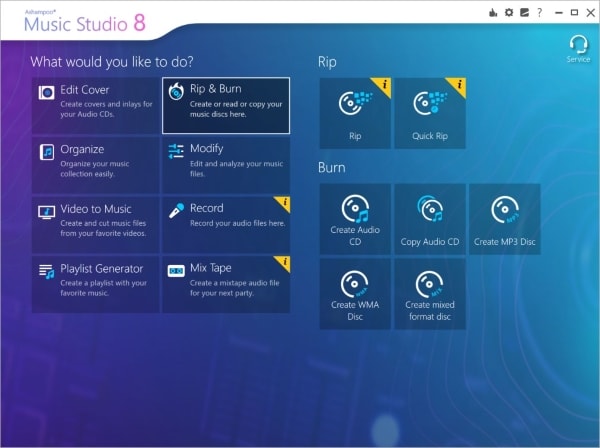
9. Acoustica
Compatibility: Windows & Mac
Acon Digital made Acoustica, which is an audio editor. It is available in two variants, Standard and Premium versions. Both the offered editions are powerful audio editors. It allows you to edit and navigate a single track. You can also edit multiple tracks at once while maintaining the quality. There is a lot you can find in this.
Acoustica provides you the facility to add processing tools and chains through plugins. It has made it capable for the users to use timer and input level triggered recording. Acoustica also has an ultra-fast, non-destructive editing engine that can be used as a song editor. Make the best use of this tool for your tasks.

10. Adobe Audition
Compatibility: Windows & Mac
Have you not found any audio editor that can help you make what you want with full freedom? Adobe has made that possible. Adobe Audition is a platform available for everyone to use. It has a sophisticated and eye-catching user interface that you will not find among others.
You have always heard about Adobe being among the best tools. This professional editor provides top-notch facilities. Apart from editing, Adobe Audition is an audio clip editor that allows you to clean and restore your pre-recorded audio.
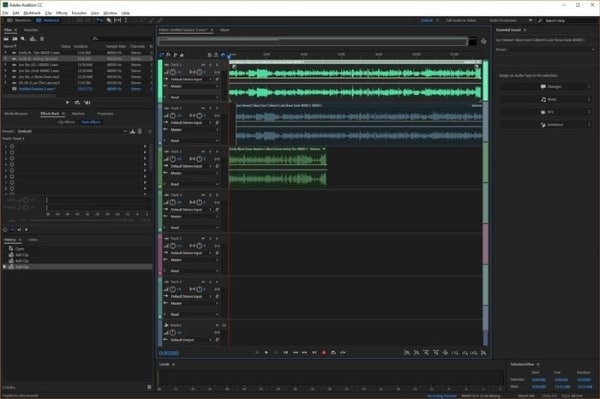
Final Words
What if we ask you to name an excellent audio editor? Can you name any? After reading the above article, we hope that you have learned something as we shared 10 amazing song editors along with their impressive features. Are you a content creator? You must also need a video editor along with audio editors to edit your videos. One great video editor is Wondershare Filmora .
This software not only offers editing tools but also provides editing elements, video effects, sound effects, transitions, titles, and whatnot. What else do you get from Filmora? The advanced editing section is packed with features like AI Portrait, Auto Highlight, Normalize, Video Stabilize, and much more than you can imagine.
For Win 7 or later (64-bit)
For macOS 10.12 or later
For macOS 10.12 or later
For macOS 10.12 or later
For macOS 10.12 or later
Precision Timing in Post-Production: Matching Video Cuts with Audio Beats Using Premiere Pro
How to Edit Videos to the Beat in Premiere Pro?

Benjamin Arango
Mar 27, 2024• Proven solutions
A rapid succession of shots can make any music video or a feature film more entertaining to watch. The popularity of beat edits has gone through the roof in the era of social media videos, as so many YouTubers and video content creators produce videos that are perfectly synced to the music. This video editing technique can be used in a single scene or throughout an entire video, depending on the project and the effect you would like the video to make on the viewer. Read on if you would like to learn how to edit video clips to match the beat of a song in Adobe Premiere Pro.
How to Edit and Auto-Sync Video Clips to the Beat of a Song in Adobe Premiere Pro for Free?
Before you start editing clips to the beat, you must first ensure that all of the materials you want to include in that video are imported into the project you created in Adobe Premiere Pro. Once the footage you intend to use in your video is in the Media Bin, you should head over to the New submenu in the File menu.
Afterward, you can add an audio file to the timeline and ensure that the sequence settings are correct. The audio file is going to serve as the core around which you are going to build the entire video, which is why it is important to select a rhythmic song that has clearly distinguishable beats.
Click on the Wrench icon and choose the Show Audio Waveform option from the drop-down menu, so that you can see the beats in the audio file. Make sure that the sequence you created is selected and not the audio file you added to the timeline and then position the playhead at the beginning of the song. Listening to the music to which you would like to edit your video a few times is recommended because it will enable you to better understand where the beats are located.
When ready start adding markers to the sequence by using the M keyboard shortcut, so that every beat of the song contains a marker. This may take a few tries because hitting the beats can be difficult for video editors that don’t have any musical talents, but with practice, you should be able to position the markers precisely where they need to be. Also, you can make the adjustments to the video you’re creating after you sync your footage with the audio so even if the markers aren’t positioned perfectly you can make corrections later.
Head over to the Media Bin and proceed to add In and Out points, by either clicking on their icons or using the I and O buttons, to all video clips you want to edit to the beat. By doing so you will let Adobe Premiere know which parts of the video clips you want to keep and where it should create cuts. After setting the In and Out points for all the video clips you would like to use in your project you just have to select them. The order in which your footage is selected is important as it will determine where they are going to be placed on the timeline.
Choose the Automate to Sequence option from the Clip menu and once the Automate to Sequence window appears on the screen you should choose the Selection Order option from the Ordering menu. Afterward, you should select the At Unnumbered Markers setting from the Placement menu and change the Method to the Overwrite Edit.
Make sure that the Use In/Out Range option is enabled and click on the Ignore Audio checkbox if your video clips also contain audio. Click OK to confirm the changes and Adobe Premiere Pro will automatically match your footage to the markers you added to the sequence.
How to Edit Video Clips to the Beat of a Song with BeatEdit Extension for Adobe Premiere Pro?
Placing markers at each beat in the song can be both difficult and time-consuming, which defeats the purpose of using Adobe Premiere Pro to automate this process. In case you are looking to save some time on adding markers to a sequence, you should try the Mamoworld’s BeatEdit extension for Adobe Premiere Pro that analyses the music and adds markers automatically. Here’s how you can edit video clips to match the beat with BeatEdit.
How to Edit Footage to the Beat in Premiere Pro with the BeatEdit Extension?
In order to download and install the BeatEdit in Adobe Premiere Pro, you must pay a one-time $99,99 fee. After you go through the installation process, you can launch BeatEdit from the Extensions submenu that is located in the Window menu.
After the BeatEdit window pops up on the screen you should click on the Load Music button in order to start the beat detection process. After the audio file is analyzed blue lines are going to be displayed at each beat and you’ll be able to hear a click sound if you play the song. BeatEdit lets you adjust the volume of the audio file you analyzed and enables you to select the beats where you want to make the cuts in your footage.
You can choose if you want to select beats evenly or randomly, specify their frequency or select the portion of the song from which you want to select the beats. The extension also lets you add extra markers that are not located at beat and adjust their amount or minimum distance. BeatEdit generates clip and sequence markers, so make sure that the sequence markers option is selected before clicking on the Create Markers button.
Add the audio file you would like to use in your video to the Adobe Premiere Pro’s timeline and proceed to select the video clips in the Media Bin. Place the playhead at the beginning of the timeline and select the Automate to Sequence option from the Clip menu. You can then select the same settings you’d select if you added the markers to the sequence on your own.
Conclusion
Editing videos to the beat of a song in Premiere Pro is becoming increasingly popular among video content creators. Hopefully, our tutorial has helped you learn this simple but effective video editing technique so that you can use it to make the videos your friends and followers on social media are going to enjoy watching. It is important to remember that how effective your beat edits are going to be, depends on the quality of the footage and the song selection. Do you know how to edit video clips to match the beat of a song in Premiere Pro? If so, share your experiences with us in the comments.

Benjamin Arango
Benjamin Arango is a writer and a lover of all things video.
Follow @Benjamin Arango
Benjamin Arango
Mar 27, 2024• Proven solutions
A rapid succession of shots can make any music video or a feature film more entertaining to watch. The popularity of beat edits has gone through the roof in the era of social media videos, as so many YouTubers and video content creators produce videos that are perfectly synced to the music. This video editing technique can be used in a single scene or throughout an entire video, depending on the project and the effect you would like the video to make on the viewer. Read on if you would like to learn how to edit video clips to match the beat of a song in Adobe Premiere Pro.
How to Edit and Auto-Sync Video Clips to the Beat of a Song in Adobe Premiere Pro for Free?
Before you start editing clips to the beat, you must first ensure that all of the materials you want to include in that video are imported into the project you created in Adobe Premiere Pro. Once the footage you intend to use in your video is in the Media Bin, you should head over to the New submenu in the File menu.
Afterward, you can add an audio file to the timeline and ensure that the sequence settings are correct. The audio file is going to serve as the core around which you are going to build the entire video, which is why it is important to select a rhythmic song that has clearly distinguishable beats.
Click on the Wrench icon and choose the Show Audio Waveform option from the drop-down menu, so that you can see the beats in the audio file. Make sure that the sequence you created is selected and not the audio file you added to the timeline and then position the playhead at the beginning of the song. Listening to the music to which you would like to edit your video a few times is recommended because it will enable you to better understand where the beats are located.
When ready start adding markers to the sequence by using the M keyboard shortcut, so that every beat of the song contains a marker. This may take a few tries because hitting the beats can be difficult for video editors that don’t have any musical talents, but with practice, you should be able to position the markers precisely where they need to be. Also, you can make the adjustments to the video you’re creating after you sync your footage with the audio so even if the markers aren’t positioned perfectly you can make corrections later.
Head over to the Media Bin and proceed to add In and Out points, by either clicking on their icons or using the I and O buttons, to all video clips you want to edit to the beat. By doing so you will let Adobe Premiere know which parts of the video clips you want to keep and where it should create cuts. After setting the In and Out points for all the video clips you would like to use in your project you just have to select them. The order in which your footage is selected is important as it will determine where they are going to be placed on the timeline.
Choose the Automate to Sequence option from the Clip menu and once the Automate to Sequence window appears on the screen you should choose the Selection Order option from the Ordering menu. Afterward, you should select the At Unnumbered Markers setting from the Placement menu and change the Method to the Overwrite Edit.
Make sure that the Use In/Out Range option is enabled and click on the Ignore Audio checkbox if your video clips also contain audio. Click OK to confirm the changes and Adobe Premiere Pro will automatically match your footage to the markers you added to the sequence.
How to Edit Video Clips to the Beat of a Song with BeatEdit Extension for Adobe Premiere Pro?
Placing markers at each beat in the song can be both difficult and time-consuming, which defeats the purpose of using Adobe Premiere Pro to automate this process. In case you are looking to save some time on adding markers to a sequence, you should try the Mamoworld’s BeatEdit extension for Adobe Premiere Pro that analyses the music and adds markers automatically. Here’s how you can edit video clips to match the beat with BeatEdit.
How to Edit Footage to the Beat in Premiere Pro with the BeatEdit Extension?
In order to download and install the BeatEdit in Adobe Premiere Pro, you must pay a one-time $99,99 fee. After you go through the installation process, you can launch BeatEdit from the Extensions submenu that is located in the Window menu.
After the BeatEdit window pops up on the screen you should click on the Load Music button in order to start the beat detection process. After the audio file is analyzed blue lines are going to be displayed at each beat and you’ll be able to hear a click sound if you play the song. BeatEdit lets you adjust the volume of the audio file you analyzed and enables you to select the beats where you want to make the cuts in your footage.
You can choose if you want to select beats evenly or randomly, specify their frequency or select the portion of the song from which you want to select the beats. The extension also lets you add extra markers that are not located at beat and adjust their amount or minimum distance. BeatEdit generates clip and sequence markers, so make sure that the sequence markers option is selected before clicking on the Create Markers button.
Add the audio file you would like to use in your video to the Adobe Premiere Pro’s timeline and proceed to select the video clips in the Media Bin. Place the playhead at the beginning of the timeline and select the Automate to Sequence option from the Clip menu. You can then select the same settings you’d select if you added the markers to the sequence on your own.
Conclusion
Editing videos to the beat of a song in Premiere Pro is becoming increasingly popular among video content creators. Hopefully, our tutorial has helped you learn this simple but effective video editing technique so that you can use it to make the videos your friends and followers on social media are going to enjoy watching. It is important to remember that how effective your beat edits are going to be, depends on the quality of the footage and the song selection. Do you know how to edit video clips to match the beat of a song in Premiere Pro? If so, share your experiences with us in the comments.

Benjamin Arango
Benjamin Arango is a writer and a lover of all things video.
Follow @Benjamin Arango
Benjamin Arango
Mar 27, 2024• Proven solutions
A rapid succession of shots can make any music video or a feature film more entertaining to watch. The popularity of beat edits has gone through the roof in the era of social media videos, as so many YouTubers and video content creators produce videos that are perfectly synced to the music. This video editing technique can be used in a single scene or throughout an entire video, depending on the project and the effect you would like the video to make on the viewer. Read on if you would like to learn how to edit video clips to match the beat of a song in Adobe Premiere Pro.
How to Edit and Auto-Sync Video Clips to the Beat of a Song in Adobe Premiere Pro for Free?
Before you start editing clips to the beat, you must first ensure that all of the materials you want to include in that video are imported into the project you created in Adobe Premiere Pro. Once the footage you intend to use in your video is in the Media Bin, you should head over to the New submenu in the File menu.
Afterward, you can add an audio file to the timeline and ensure that the sequence settings are correct. The audio file is going to serve as the core around which you are going to build the entire video, which is why it is important to select a rhythmic song that has clearly distinguishable beats.
Click on the Wrench icon and choose the Show Audio Waveform option from the drop-down menu, so that you can see the beats in the audio file. Make sure that the sequence you created is selected and not the audio file you added to the timeline and then position the playhead at the beginning of the song. Listening to the music to which you would like to edit your video a few times is recommended because it will enable you to better understand where the beats are located.
When ready start adding markers to the sequence by using the M keyboard shortcut, so that every beat of the song contains a marker. This may take a few tries because hitting the beats can be difficult for video editors that don’t have any musical talents, but with practice, you should be able to position the markers precisely where they need to be. Also, you can make the adjustments to the video you’re creating after you sync your footage with the audio so even if the markers aren’t positioned perfectly you can make corrections later.
Head over to the Media Bin and proceed to add In and Out points, by either clicking on their icons or using the I and O buttons, to all video clips you want to edit to the beat. By doing so you will let Adobe Premiere know which parts of the video clips you want to keep and where it should create cuts. After setting the In and Out points for all the video clips you would like to use in your project you just have to select them. The order in which your footage is selected is important as it will determine where they are going to be placed on the timeline.
Choose the Automate to Sequence option from the Clip menu and once the Automate to Sequence window appears on the screen you should choose the Selection Order option from the Ordering menu. Afterward, you should select the At Unnumbered Markers setting from the Placement menu and change the Method to the Overwrite Edit.
Make sure that the Use In/Out Range option is enabled and click on the Ignore Audio checkbox if your video clips also contain audio. Click OK to confirm the changes and Adobe Premiere Pro will automatically match your footage to the markers you added to the sequence.
How to Edit Video Clips to the Beat of a Song with BeatEdit Extension for Adobe Premiere Pro?
Placing markers at each beat in the song can be both difficult and time-consuming, which defeats the purpose of using Adobe Premiere Pro to automate this process. In case you are looking to save some time on adding markers to a sequence, you should try the Mamoworld’s BeatEdit extension for Adobe Premiere Pro that analyses the music and adds markers automatically. Here’s how you can edit video clips to match the beat with BeatEdit.
How to Edit Footage to the Beat in Premiere Pro with the BeatEdit Extension?
In order to download and install the BeatEdit in Adobe Premiere Pro, you must pay a one-time $99,99 fee. After you go through the installation process, you can launch BeatEdit from the Extensions submenu that is located in the Window menu.
After the BeatEdit window pops up on the screen you should click on the Load Music button in order to start the beat detection process. After the audio file is analyzed blue lines are going to be displayed at each beat and you’ll be able to hear a click sound if you play the song. BeatEdit lets you adjust the volume of the audio file you analyzed and enables you to select the beats where you want to make the cuts in your footage.
You can choose if you want to select beats evenly or randomly, specify their frequency or select the portion of the song from which you want to select the beats. The extension also lets you add extra markers that are not located at beat and adjust their amount or minimum distance. BeatEdit generates clip and sequence markers, so make sure that the sequence markers option is selected before clicking on the Create Markers button.
Add the audio file you would like to use in your video to the Adobe Premiere Pro’s timeline and proceed to select the video clips in the Media Bin. Place the playhead at the beginning of the timeline and select the Automate to Sequence option from the Clip menu. You can then select the same settings you’d select if you added the markers to the sequence on your own.
Conclusion
Editing videos to the beat of a song in Premiere Pro is becoming increasingly popular among video content creators. Hopefully, our tutorial has helped you learn this simple but effective video editing technique so that you can use it to make the videos your friends and followers on social media are going to enjoy watching. It is important to remember that how effective your beat edits are going to be, depends on the quality of the footage and the song selection. Do you know how to edit video clips to match the beat of a song in Premiere Pro? If so, share your experiences with us in the comments.

Benjamin Arango
Benjamin Arango is a writer and a lover of all things video.
Follow @Benjamin Arango
Benjamin Arango
Mar 27, 2024• Proven solutions
A rapid succession of shots can make any music video or a feature film more entertaining to watch. The popularity of beat edits has gone through the roof in the era of social media videos, as so many YouTubers and video content creators produce videos that are perfectly synced to the music. This video editing technique can be used in a single scene or throughout an entire video, depending on the project and the effect you would like the video to make on the viewer. Read on if you would like to learn how to edit video clips to match the beat of a song in Adobe Premiere Pro.
How to Edit and Auto-Sync Video Clips to the Beat of a Song in Adobe Premiere Pro for Free?
Before you start editing clips to the beat, you must first ensure that all of the materials you want to include in that video are imported into the project you created in Adobe Premiere Pro. Once the footage you intend to use in your video is in the Media Bin, you should head over to the New submenu in the File menu.
Afterward, you can add an audio file to the timeline and ensure that the sequence settings are correct. The audio file is going to serve as the core around which you are going to build the entire video, which is why it is important to select a rhythmic song that has clearly distinguishable beats.
Click on the Wrench icon and choose the Show Audio Waveform option from the drop-down menu, so that you can see the beats in the audio file. Make sure that the sequence you created is selected and not the audio file you added to the timeline and then position the playhead at the beginning of the song. Listening to the music to which you would like to edit your video a few times is recommended because it will enable you to better understand where the beats are located.
When ready start adding markers to the sequence by using the M keyboard shortcut, so that every beat of the song contains a marker. This may take a few tries because hitting the beats can be difficult for video editors that don’t have any musical talents, but with practice, you should be able to position the markers precisely where they need to be. Also, you can make the adjustments to the video you’re creating after you sync your footage with the audio so even if the markers aren’t positioned perfectly you can make corrections later.
Head over to the Media Bin and proceed to add In and Out points, by either clicking on their icons or using the I and O buttons, to all video clips you want to edit to the beat. By doing so you will let Adobe Premiere know which parts of the video clips you want to keep and where it should create cuts. After setting the In and Out points for all the video clips you would like to use in your project you just have to select them. The order in which your footage is selected is important as it will determine where they are going to be placed on the timeline.
Choose the Automate to Sequence option from the Clip menu and once the Automate to Sequence window appears on the screen you should choose the Selection Order option from the Ordering menu. Afterward, you should select the At Unnumbered Markers setting from the Placement menu and change the Method to the Overwrite Edit.
Make sure that the Use In/Out Range option is enabled and click on the Ignore Audio checkbox if your video clips also contain audio. Click OK to confirm the changes and Adobe Premiere Pro will automatically match your footage to the markers you added to the sequence.
How to Edit Video Clips to the Beat of a Song with BeatEdit Extension for Adobe Premiere Pro?
Placing markers at each beat in the song can be both difficult and time-consuming, which defeats the purpose of using Adobe Premiere Pro to automate this process. In case you are looking to save some time on adding markers to a sequence, you should try the Mamoworld’s BeatEdit extension for Adobe Premiere Pro that analyses the music and adds markers automatically. Here’s how you can edit video clips to match the beat with BeatEdit.
How to Edit Footage to the Beat in Premiere Pro with the BeatEdit Extension?
In order to download and install the BeatEdit in Adobe Premiere Pro, you must pay a one-time $99,99 fee. After you go through the installation process, you can launch BeatEdit from the Extensions submenu that is located in the Window menu.
After the BeatEdit window pops up on the screen you should click on the Load Music button in order to start the beat detection process. After the audio file is analyzed blue lines are going to be displayed at each beat and you’ll be able to hear a click sound if you play the song. BeatEdit lets you adjust the volume of the audio file you analyzed and enables you to select the beats where you want to make the cuts in your footage.
You can choose if you want to select beats evenly or randomly, specify their frequency or select the portion of the song from which you want to select the beats. The extension also lets you add extra markers that are not located at beat and adjust their amount or minimum distance. BeatEdit generates clip and sequence markers, so make sure that the sequence markers option is selected before clicking on the Create Markers button.
Add the audio file you would like to use in your video to the Adobe Premiere Pro’s timeline and proceed to select the video clips in the Media Bin. Place the playhead at the beginning of the timeline and select the Automate to Sequence option from the Clip menu. You can then select the same settings you’d select if you added the markers to the sequence on your own.
Conclusion
Editing videos to the beat of a song in Premiere Pro is becoming increasingly popular among video content creators. Hopefully, our tutorial has helped you learn this simple but effective video editing technique so that you can use it to make the videos your friends and followers on social media are going to enjoy watching. It is important to remember that how effective your beat edits are going to be, depends on the quality of the footage and the song selection. Do you know how to edit video clips to match the beat of a song in Premiere Pro? If so, share your experiences with us in the comments.

Benjamin Arango
Benjamin Arango is a writer and a lover of all things video.
Follow @Benjamin Arango
Also read:
- [New] 9 Ultimate Free Online Editors for Content Creators
- [New] Crafting Premium Soundtracks with Zoom's Record Feature for 2024
- [New] In 2024, Syncing Screen and Video with Ease
- [Updated] A Step-by-Step Approach to Boosting Your Podcast's SEO
- [Updated] In 2024, MP4 Player Guide Top Selections
- How to Remove Forgotten PIN Of Your Tecno Spark Go (2023)
- In 2024, Downloading SamFw FRP Tool 3.0 for Vivo S18e
- New 2024 Approved Advanced Strategies to Convert Your Spotify Playlist Into a Local Library
- New 2024 Approved Best Free Online Montage Track Collections
- New Behind the Scenes A Detailed Guide to Setting Up and Recording with GarageBand for 2024
- New Ideal Soundtracks The 15 Ultimate Music Selections for Diverse Film Projects
- Remove Google FRP lock on Infinix
- Silencing the Static: A Step-by-Step Solution to Rectify Crackling Sounds on Your Windows PC
- Updated In 2024, Audacitys Magic Wand Techniques for Effortless Removal of Singers From Soundscapes
- Updated Mastering Quick Adjustments Altering Audio Pace
- Title: Mastering Video Editing Replacing Audio Tracks - A Comprehensive Guide (Part 1)
- Author: Ella
- Created at : 2024-09-30 08:31:15
- Updated at : 2024-10-03 09:36:08
- Link: https://sound-optimizing.techidaily.com/mastering-video-editing-replacing-audio-tracks-a-comprehensive-guide-part-1/
- License: This work is licensed under CC BY-NC-SA 4.0.


